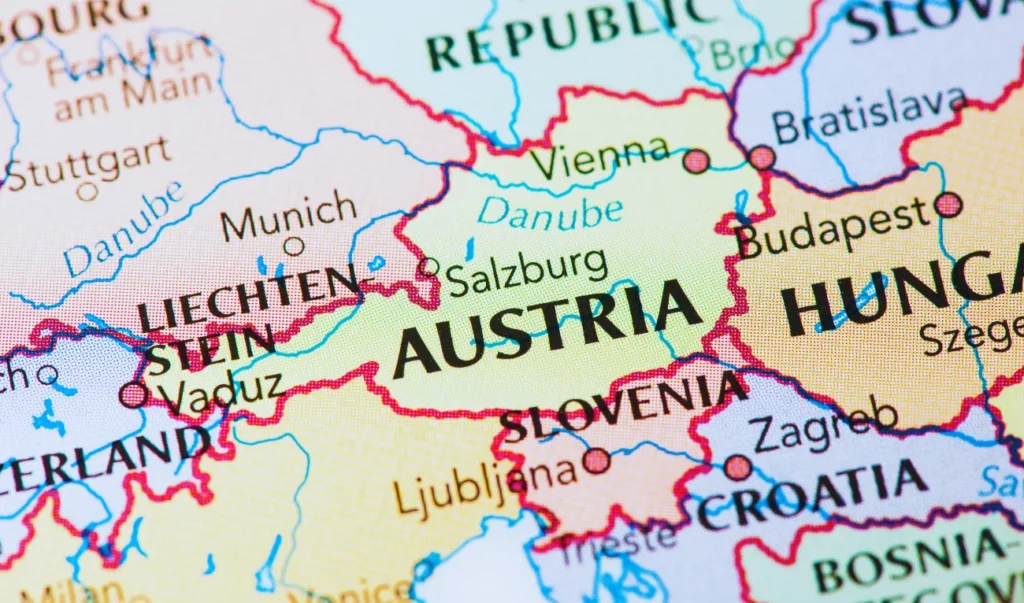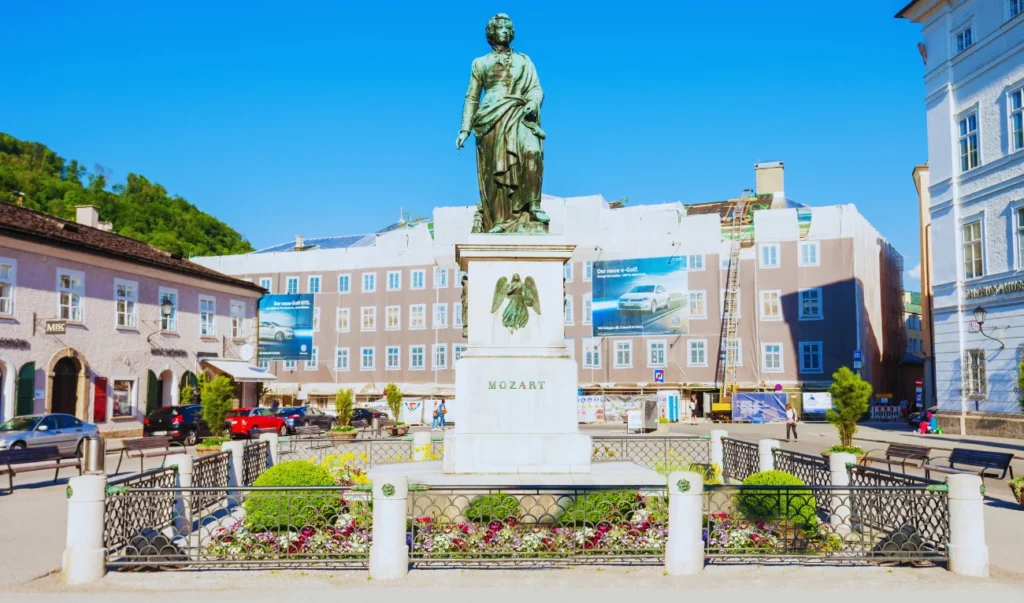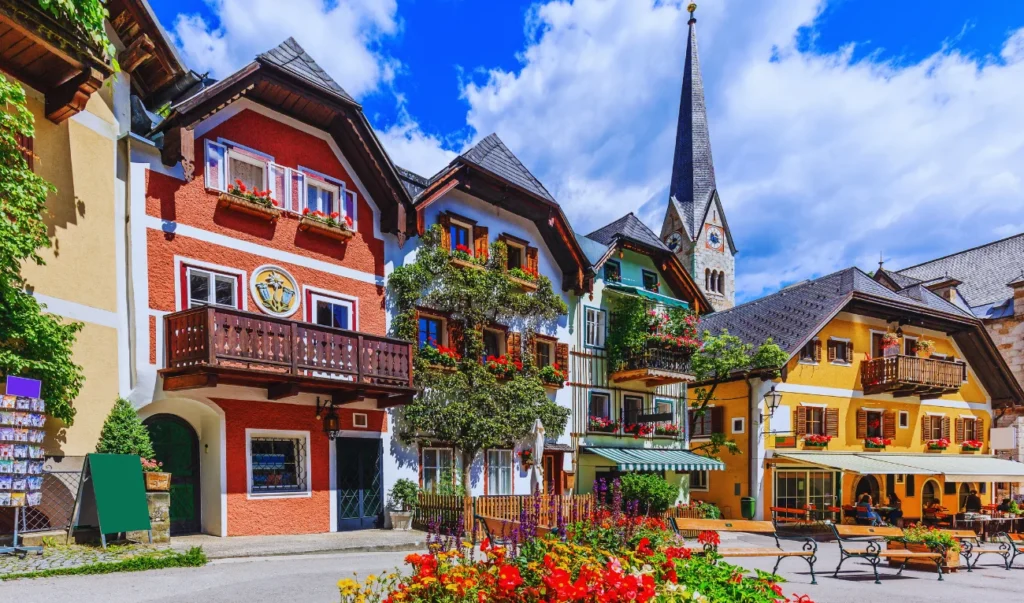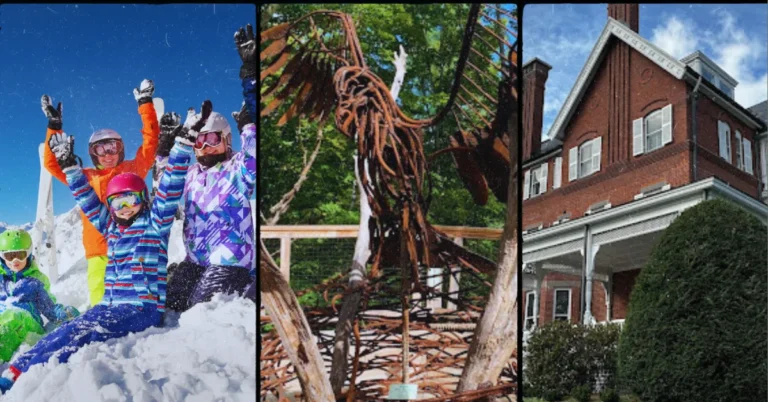Ultimate Austria Travel Guide: Discover the Heart of Europe
Austria, a captivating country nestled in the heart of Europe, offers a diverse array of attractions that appeal to every kind of traveler. From the majestic peaks of the Austrian Alps to the charming cobblestone streets of its historic cities, Austria seamlessly blends natural beauty with rich cultural heritage. Visitors can explore grand imperial palaces in Vienna, experience the birthplace of Mozart in Salzburg, enjoy world-class skiing in Innsbruck, or relax by the serene lakes in Hallstatt. With a temperate climate that provides four distinct seasons, Austria is a year-round destination perfect for outdoor adventures, cultural experiences, and culinary delights.
In this comprehensive travel blog post, readers will discover:
- The best cities to visit in Austria, including Vienna, Salzburg, Innsbruck, Graz, and Linz.
- Top attractions and activities in each destination.
- Practical travel tips, including the best time to visit, transportation options, and accommodation suggestions.
- Insights into Austrian cuisine and must-try dishes.
- Detailed descriptions of Austria’s diverse landscapes and outdoor activities.
Location and Bordering Countries
Austria is a landlocked country situated in Central Europe. It shares borders with eight countries:
Germany to the northwest,
Czech Republic to the north,
Slovakia to the northeast,
Hungary to the east,
Slovenia to the south,
Italy to the southwest, and
Switzerland and Liechtenstein to the west.
This central location makes Austria a gateway to many European destinations, offering a rich blend of cultural influences from its neighbors.
Geography and Map

Austria’s geography is diverse, with the eastern Alps covering the western and southern parts of the country, while the Danube River flows through the northern and eastern regions. The highest point is Grossglockner, standing at 3,798 meters (12,461 feet). The country’s varied landscapes include alpine meadows, dense forests, and rolling hills, providing a stunning backdrop for outdoor activities and picturesque scenery.
Best Time to Visit Austria
The best time to visit Austria depends on your interests and the activities you wish to enjoy.
- Spring (March to May): Ideal for those who enjoy mild weather, fewer crowds, and blooming landscapes. It’s a great time for hiking and exploring cities without the peak season rush.
- Summer (June to August): Perfect for outdoor enthusiasts looking to hike, bike, and enjoy the lakes. The weather is warm, and many cultural festivals take place during this time.
- Autumn (September to November): A wonderful time to experience Austria’s cultural scene, including wine festivals and classical music concerts. The fall foliage adds a picturesque charm to the landscapes.
- Winter (December to February): The best time for winter sports, with excellent skiing and snowboarding conditions in the Alps. The festive Christmas markets add a magical touch to the cities.
Exploring Austria: A Land of Diverse Attractions
1.Vienna: The Imperial Capital

Start your journey in Vienna, Austria’s capital, a city of grandeur and elegance. Known for its imperial palaces, artistic heritage, and coffee culture, Vienna is a perfect blend of history and modernity. Walking along the Ringstrasse, the grand boulevard that circles the city center, you’ll encounter architectural marvels like the Vienna State Opera, the Kunsthistorisches Museum, and the Parliament Building. The Schönbrunn Palace, a UNESCO World Heritage site, offers a glimpse into the opulent lifestyle of the Habsburgs, with its vast gardens, ornate rooms, and the Gloriette providing endless exploration opportunities.
St. Stephen’s Cathedral, with its stunning Gothic architecture and panoramic city views from the South Tower, is another must-visit. The Hofburg Palace, the former imperial winter residence, now houses several museums, including the Imperial Apartments and the Sisi Museum, which showcase the grandeur of the Austro-Hungarian Empire. The Vienna State Opera, renowned for its world-class performances where music and architecture merge beautifully, is a cultural highlight.
Stroll through the Belvedere Palace, home to an impressive collection of Austrian art, including works by Gustav Klimt. Enjoy the beautifully landscaped gardens and the baroque architecture. Don’t miss the Naschmarkt, Vienna’s largest outdoor market. It offers a variety of food, drinks, and unique items, perfect for sampling local delicacies. Vienna’s vibrant neighborhoods, such as the historic Innere Stadt and trendy Neubau, offer diverse dining, shopping, and entertainment options, making the city an unforgettable destination.
2.Salzburg: The Birthplace of Mozart

Next, head to Salzburg, nestled in the foothills of the Alps. This city is famous for its baroque architecture and musical heritage, feeling like a step into a fairy tale. Salzburg’s old town, a UNESCO World Heritage site, is a maze of narrow streets, historic buildings, and picturesque squares. Dominating the skyline is the Hohensalzburg Fortress, one of Europe’s largest and best-preserved medieval castles, offering panoramic views of the city and surrounding mountains.
Visit Mozart’s Birthplace and Residence to gain insight into the life and works of the famous composer. These museums provide an immersive experience into Mozart’s world. The Mirabell Palace and Gardens, famous for its appearance in “The Sound of Music,” offers meticulously manicured gardens perfect for a leisurely walk.
The Salzburg Cathedral, a magnificent baroque structure with a rich history, stands as a testament to the city’s cultural heritage. Walk along Getreidegasse, a charming shopping street lined with traditional and modern shops, offering everything from high-end fashion to local crafts. The Hellbrunn Palace, known for its trick fountains and beautiful park, provides a fun and unique experience, especially in the summer.
For nature enthusiasts, the nearby Salzkammergut region offers crystal-clear lakes, scenic hiking trails, and opportunities for boating and swimming. Salzburg’s cultural calendar is packed with events, from the prestigious Salzburg Festival to smaller concerts and performances throughout the year, making it a city rich in cultural and natural beauty.
3.Innsbruck: The Heart of the Alps

Innsbruck, the capital of Tyrol, is surrounded by breathtaking alpine scenery and offers a mix of urban and outdoor activities. The city’s historic old town, with its colorful facades and cobblestone streets, is a delight to explore. The Golden Roof, a landmark in the old town, features 2,657 fire-gilded copper tiles, built for Emperor Maximilian I, offering a glimpse into the city’s imperial past.
Visit the Imperial Palace (Hofburg), once the residence of the Tyrolean sovereigns, now a museum showcasing imperial history with lavish rooms and grand architecture. Ambras Castle, a Renaissance castle with a rich art collection and beautiful gardens, is another highlight. The Bergisel Ski Jump, designed by Zaha Hadid, is an iconic structure with a viewing platform offering panoramic views of the city and the Alps.
Take a ride on the Nordkette Cable Car from the city center to the alpine heights, offering stunning views and hiking trails. In winter, the surrounding mountains transform into a winter sports wonderland, with excellent skiing and snowboarding facilities. Wander through Innsbruck’s medieval streets, enjoy the colorful facades, and visit the old town’s many shops, cafes, and restaurants.
The combination of urban charm, natural beauty, rich history, and vibrant cultural scene make Innsbruck a must-visit destination in Austria. From traditional Tyrolean events to modern art exhibitions and music festivals, Innsbruck has something to offer every traveler.
4.Hallstatt: The Fairytale Village

Hallstatt, a small village in the Salzkammergut region, is renowned for its picturesque setting and historical significance. Nestled between the Hallstätter See and the Dachstein mountains, Hallstatt is often described as one of the most beautiful villages in the world. Its charming wooden houses, narrow streets, and stunning lake views create a postcard-perfect scene.
Explore the Hallstatt Skywalk for a bird’ s-eye view of the village and lake from a panoramic platform known as the “World Heritage View.” The Hallstatt Salt Mine, the world’s oldest salt mine, provides an adventurous exploration of underground tunnels and slides, showcasing the region’s rich history of salt mining.
Take a boat ride on the Hallstätter See to take in the serene beauty of the lake and its surrounding mountains. Discover the Dachstein Ice Caves, with their stunning ice formations and underground landscapes, offering a unique and otherworldly experience. Visit the Hallstatt Ossuary, a chapel displaying over 1,200 painted skulls, providing a fascinating glimpse into local customs and history.
The Hallstatt Museum showcases the village’s 7,000-year history and highlights its archaeological significance. The combination of natural beauty, historical richness, and charming ambiance makes Hallstatt a must-visit destination for travelers seeking a fairytale-like experience.
5.Graz: Austria’s Culinary Capital
Graz, Austria’s second-largest city, is a UNESCO World Heritage site and was designated a City of Culinary Delights. Its historical architecture and lively cultural events complement the city’s vibrant food scene. Wander through the old town, with its Renaissance and Baroque buildings, and explore landmarks such as the Clock Tower on Schlossberg Hill, offering panoramic views of the city.
The Kunsthaus Graz, a contemporary art museum with its unique blob-like architecture, and the Murinsel, an artificial island in the Mur River, reflect the city’s modern artistic spirit. Visit the Graz Cathedral and Mausoleum, architectural marvels from the 15th and 17th centuries, and the Styrian Armoury, housing the world’s largest historical armory.
Don’t miss the local farmers’ markets, especially the Kaiser-Josef-Platz Market, where you can sample regional products and delicacies. Graz’s blend of historical charm, modern innovation, and culinary excellence makes it a unique destination in Austria.
6.Linz: The Cultural Hub
Linz, located along the Danube River, is known for its vibrant cultural scene and modern art installations. The city’s history dates back to Roman times, and today it boasts a mix of historical and contemporary attractions. Visit the Ars Electronica Center, a museum dedicated to technology and future innovations, and the Lentos Art Museum, which features modern and contemporary art.
Explore the charming old town with its baroque architecture, including the Linz Castle and the Old Cathedral. The Pöstlingberg, accessible by the steepest adhesion railway in Europe, offers stunning views over Linz and the surrounding region.
The city’s cultural calendar is filled with events, from the Linz Klangwolke, an open-air multimedia show, to the Crossing Europe Film Festival. Linz’s historical depth and modern creativity make it a fascinating destination.
7.Klagenfurt: The Lakeside Gem
Klagenfurt, situated on the eastern shore of Lake Wörthersee, is known for its beautiful lake views and charming old town. The city’s Italian-influenced architecture is evident in its arcaded courtyards and Renaissance buildings. Visit the Landhaus, the seat of the Carinthian parliament, and the Lindwurmbrunnen, a dragon fountain that is the symbol of the city.
Take a boat trip on Lake Wörthersee to enjoy the crystal-clear waters and scenic surroundings. The Minimundus miniature park, featuring models of famous buildings from around the world, is a fun attraction for families. Klagenfurt’s blend of cultural attractions and natural beauty makes it a delightful place to visit.
8.Bregenz: The Cultural and Scenic Marvel
Bregenz, located on the shores of Lake Constance, is famous for its cultural events and scenic beauty. The Bregenz Festival, held on a floating stage on the lake, is a highlight, offering spectacular opera performances with the Alps as a backdrop. Take a cable car up to Pfänder mountain for panoramic views of the lake and surrounding region.
Explore the old town with its medieval buildings and visit the Kunsthaus Bregenz, a contemporary art museum. The Martinsturm, a historic tower, offers insights into the city’s past and views over Bregenz. The combination of cultural vibrancy and stunning natural scenery makes Bregenz a unique destination.
9.Zell am See: The Alpine Paradise
Zell am See, located in the heart of the Austrian Alps, is a year-round destination offering breathtaking natural beauty and many outdoor activities. In the summer, the crystal-clear waters of Lake Zell are perfect for swimming, boating, and paddleboarding. Picture yourself relaxing on the shore, surrounded by the majestic peaks of the Hohe Tauern National Park.
During the winter months, the region transforms into a winter wonderland. The Schmittenhöhe and Kitzsteinhorn ski areas provide excellent skiing and snowboarding opportunities, catering to all skill levels. Imagine gliding down pristine slopes with panoramic views of the snow-capped mountains.
Zell am See’s charming town center boasts a variety of shops, cafes, and restaurants. Stroll along the lake promenade or visit the historic St. Hippolyte’s Church, one of the oldest in the region. With its famous glacier and the Sigmund-Thun Gorge, the nearby Kaprun region offers additional hiking and sightseeing opportunities.
10.St. Anton am Arlberg: The Skiing Mecca
St. Anton am Arlberg is internationally renowned as one of the best ski resorts in the world. Situated in the Arlberg region, it is known for its challenging slopes, deep powder, and vibrant après-ski scene. The village itself exudes alpine charm, with traditional Tyrolean architecture and a welcoming atmosphere.
The Arlberg ski area, which includes Lech, Zürs, and St. Christoph, offers over 300 kilometers of pistes and off-piste terrain, making it a paradise for skiers and snowboarders. Picture yourself carving through fresh powder, surrounded by stunning mountain vistas. After a day on the slopes, the village comes alive with lively bars, restaurants, and nightclubs.
In the summer, St. Anton transforms into a haven for hikers and mountain bikers. The lush green meadows and well-marked trails offer endless exploration opportunities. The nearby Verwall Valley is perfect for nature walks and picnics, providing a tranquil escape from the bustling village.
11.Kitzbühel: The Glamorous Alpine Town
Kitzbühel is synonymous with glamour and sophistication, known for its world-class skiing and luxurious lifestyle. The town’s medieval center, with its cobblestone streets and colorful buildings, is home to high-end boutiques, gourmet restaurants, and chic cafes. The Hahnenkamm, one of the most famous ski races in the world, takes place here, attracting elite skiers and spectators from around the globe.
The Kitzbühel Alps offer over 170 kilometers of ski slopes, catering to all levels. Imagine skiing down impeccably groomed pistes with the stunning Wilder Kaiser mountain range as your backdrop. The region is perfect for hiking, golfing, and mountain biking in the summer, with beautiful trails and scenic golf courses.
Kitzbühel’s rich cultural calendar includes events like the Kitzbühel Music Festival and the ATP Tennis Tournament, adding to its allure. The combination of natural beauty, luxury, and cultural vibrancy makes Kitzbühel a top destination in Austria.
12.Graz: Austria’s Culinary Capital
Graz, Austria’s second-largest city, is a UNESCO World Heritage site and was designated a City of Culinary Delights. Its historical architecture and lively cultural events complement the city’s vibrant food scene. Wander through the old town, with its Renaissance and Baroque buildings, and explore landmarks such as the Clock Tower on Schlossberg Hill, offering panoramic views of the city.
The Kunsthaus Graz, a contemporary art museum with its unique blob-like architecture, and the Murinsel, an artificial island in the Mur River, reflect the city’s modern artistic spirit. Visit the Graz Cathedral and Mausoleum, architectural marvels from the 15th and 17th centuries, and the Styrian Armoury, housing the world’s largest historical armory.
Don’t miss the local farmers’ markets, especially the Kaiser-Josef-Platz Market, where you can sample regional products and delicacies. Graz’s blend of historical charm, modern innovation, and culinary excellence makes it a unique destination in Austria.
13.Linz: The Cultural Hub
Linz, located along the Danube River, is known for its vibrant cultural scene and modern art installations. The city’s history dates back to Roman times, and today it boasts a mix of historical and contemporary attractions. Visit the Ars Electronica Center, a museum dedicated to technology and future innovations, and the Lentos Art Museum, which features modern and contemporary art.
Explore the charming old town with its baroque architecture, including the Linz Castle and the Old Cathedral. The Pöstlingberg, accessible by the steepest adhesion railway in Europe, offers stunning views over Linz and the surrounding region.
The city’s cultural calendar is filled with events, from the Linz Klangwolke, an open-air multimedia show, to the Crossing Europe Film Festival. Linz’s historical depth and modern creativity make it a fascinating destination.
14.Klagenfurt: The Lakeside Gem
Klagenfurt, situated on the eastern shore of Lake Wörthersee, is known for its beautiful lake views and charming old town. The city’s Italian-influenced architecture is evident in its arcaded courtyards and Renaissance buildings. Visit the Landhaus, the seat of the Carinthian parliament, and the Lindwurmbrunnen, a dragon fountain that is the symbol of the city.
Take a boat trip on Lake Wörthersee to enjoy the crystal-clear waters and scenic surroundings. The Minimundus miniature park, featuring models of famous buildings from around the world, is a fun attraction for families. Klagenfurt’s blend of cultural attractions and natural beauty makes it a delightful place to visit.
15.Bregenz: The Cultural and Scenic Marvel
Bregenz, located on the shores of Lake Constance, is famous for its cultural events and scenic beauty. The Bregenz Festival, held on a floating stage on the lake, is a highlight, offering spectacular opera performances with the Alps as a backdrop. Take a cable car up to Pfänder mountain for panoramic views of the lake and surrounding region.
Explore the old town with its medieval buildings and visit the Kunsthaus Bregenz, a contemporary art museum. The Martinsturm, a historic tower, offers insights into the city’s past and views over Bregenz. The combination of cultural vibrancy and stunning natural scenery makes Bregenz a unique destination.
Practical Information for Traveling in Austria
Transportation
Austria has an efficient and well-connected transportation system, making it easy to travel around the country.
Getting Around
By Train: Austria’s rail network, operated by ÖBB, connects major cities and regions. Imagine the scenic train rides through the Austrian countryside, with picturesque views of rolling hills, quaint villages, and majestic mountains.
By Car: Renting a car provides flexibility, especially for exploring the countryside and alpine regions. Picture yourself driving through winding mountain roads, with breathtaking landscapes at every turn.
By Bus: Buses are cost-effective for traveling within cities and to remote areas. Envision hopping on a bus that takes you through charming towns and scenic routes.
By Bike: Austria is bike-friendly with numerous cycling paths and rental options. Imagine cycling through vineyards, along rivers, and through historic towns, experiencing Austria at your own pace.
Accommodation
Austria offers a wide range of accommodation options to suit all budgets and preferences.
Where to Stay
Hotels: From luxury hotels to budget-friendly options, Austria has accommodations to fit every traveler’s needs. Imagine staying in a grand historic hotel in Vienna or a cozy boutique hotel in Salzburg.
Guesthouses and B&Bs: Experience Austrian hospitality in family-run guesthouses and bed and breakfasts. Picture waking up to a home-cooked breakfast and personalized local tips from your hosts.
Holiday Apartments: Ideal for longer stays, holiday apartments provide the comforts of home. Imagine having your own kitchen and living space, perfect for families or groups.
Hostels: Budget travelers can find affordable and sociable accommodation in hostels. Envision meeting fellow travelers and sharing stories in a friendly, communal setting.
Mountain Huts: For a unique experience, stay in a mountain hut while hiking or skiing. Picture a rustic cabin surrounded by nature, offering a cozy retreat after a day of adventure.
Health and Safety
Austria is a safe and welcoming destination for travelers.
Tips for Staying Safe
Health Insurance: Ensure you have adequate health insurance coverage for your trip. Picture yourself traveling with peace of mind, knowing you’re covered in case of emergencies.
Emergency Numbers: The emergency number in Austria is 112 for all services. Imagine having this essential information handy to ensure you’re prepared for any situation.
Travel Advisories: Check for any travel advisories or health updates before your trip. Imagine staying informed and making safe, smart travel decisions.
Local Customs: Respect local customs and etiquette to ensure a pleasant experience. Picture yourself blending in with the locals, enjoying their culture and traditions.
Money Matters
Austria uses the Euro (€) as its currency. ATMs are widely available, and credit cards are accepted in most places.
Budgeting Tips
Dining: Eating at local taverns (Gasthäuser) can be more affordable than dining in tourist areas. Picture enjoying a hearty, traditional meal at a cozy tavern without breaking the bank.
Sightseeing: Look for city passes that offer discounts on attractions and public transport. Imagine exploring the best of Austria’s cities while saving money on entrance fees and transport.
Shopping: Avoid shopping in tourist-heavy areas to find better deals. Picture discovering hidden gems and unique souvenirs in local markets and boutiques.
Quick Info Table: Essential Details for Your Austria Trip
| Category | Details |
|---|---|
| Time to Explore |

